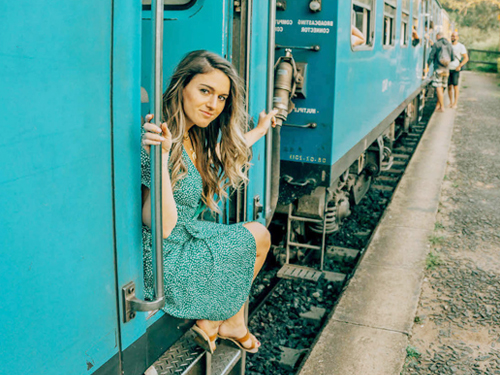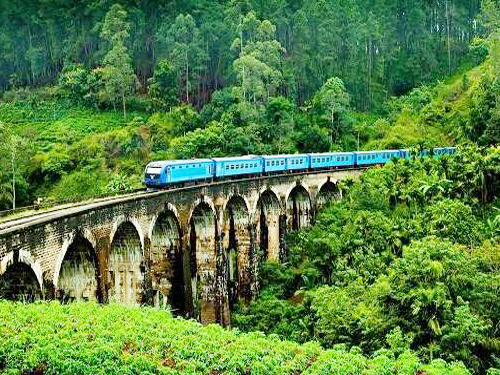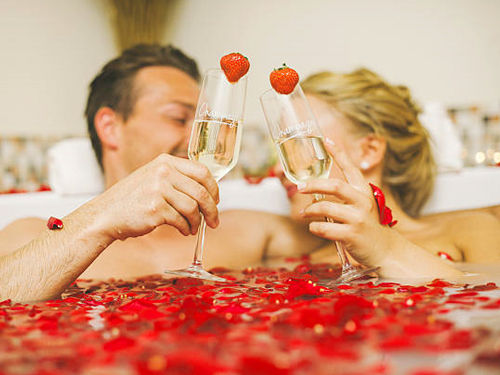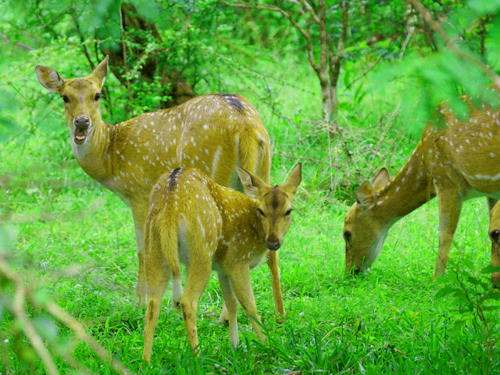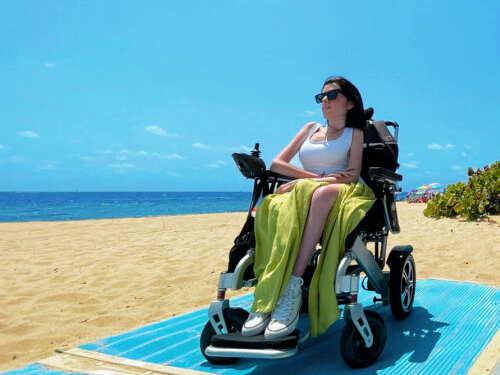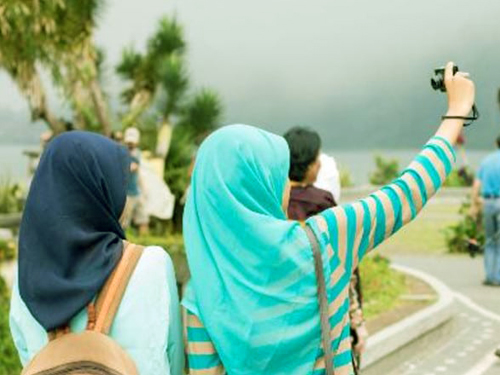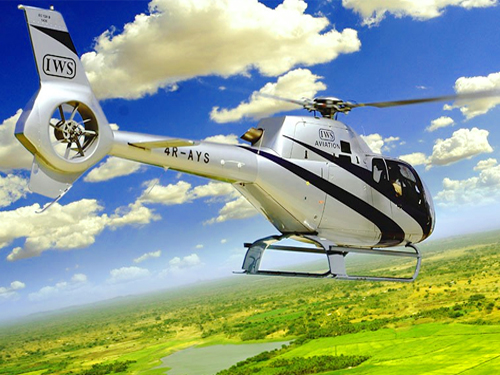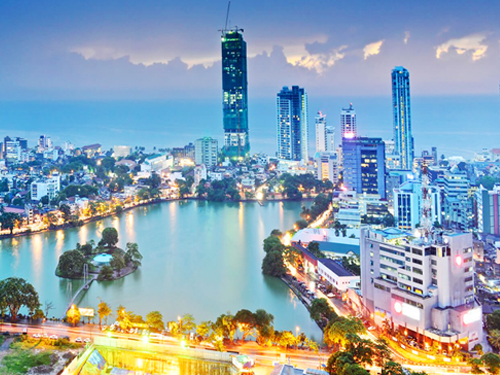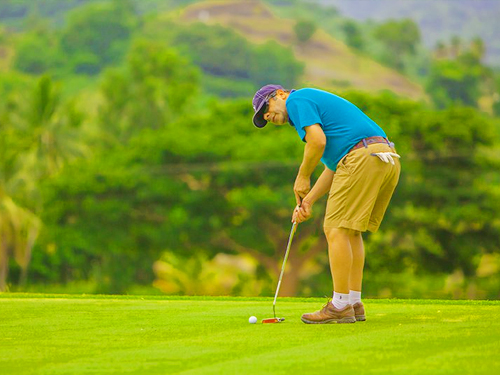Top Unique Experience in Sri Lanka
Arankele, located in a remote rural area just north of Kurunegala is home to the remains of an ancient monastery. It was once home to a sect a reclusive monks.You will find the 6 th century ruins of the Buddhist Forest Hermitage spread across a hillside with large hardwood trees. There are many ruins that can be seen, including the magnificent ancient hermitage hospital, with its stone walls, stone herbal bathtubs, herb grinders and sick rooms, as well as a superior sanitary systems.
The monastery complex was given to monks over 1,800 years ago by King Dhatunsena. Over 1,200 monks have lived there over the years. There are many artifacts and ruins. The 1,800m-long path winds its way around the mountain, offering breathtaking views. A cluster of small, rocky caves was once used as shelter and meditation spots along the path that runs through the 65-acre site.
It was discovered again in 1922. Excavations began in 1942. There are still ruins being excavated throughout the site, so there's always something new or old. There are always new ruins being discovered. The ruins are notable for the craftsmanship involved in their production. Large slabs of rock were carved from the bedrock to create floors, walls, and pedestals.
Arankele is a beautiful, secret location. You are likely to be its only visitor for the week. It is a wonderful place to stop and take a walk on the way from Colombo towards the Cultural Triangle. The Archaeology Department has granted us permission to allow our guests to take picnics here. Just make sure that you leave it the way you found it.
Beruwela Fish Harbour, which is lively and full of life in the morning just as the nightly catch comes in, is a unique experience. You can see both small boats loading their catch and larger boats that are out on the water for months bringing back tuna, sharks, and rays.It is not recommended for the faint-hearted or squeamish, but you can still learn how fish are sold, sorted and distributed at all levels. This is an amazing experience that is also a great photo opportunity.
The lanes become quieter, more flat, and more shaded once you cross Bentota Bridge. You will be guided through beautiful villages to the Virahaya temple and then on to Lunuganga House & Gardens. Stopping along the way for a refreshing drink overlooking stunning waterscapes, your guide will take you to Lunuganga House & Gardens. You will be astonished by the sounds of village life as you silently bike by to the beat of birdsong.If you're looking for a more relaxed experience, you can arrange the same tour on three wheels using the traditional Sri Lankan TukTuk.
Spend an afternoon exploring the capital looking for historic colonial treasures. Your local guide will pick you up from your hotel and take you to Pettah. You will find colonial architectural treasures here, such as the Dutch Museum. The Dutch Governor was the original owner of this 17th Century residence. It is easy to picture him sitting on the veranda, looking down at the port below, while enjoying a cup of tea and a gin and tonic.Continue onwards along the largest wholesale bazaar in the country, which will take you to St. Peter's Church. This Anglican church was established in 1821.
After a quick stop at a local cafe for iced lemonade, you'll head up York Street towards the Grand Oriental Hotel. This institution would have been a rival to the Ritz in its day.Also, don't forget to stop by Cargills, the most prestigious colonial emporium. Although this magnificent red Victorian building is no longer in use, it is still a stunning sight from the outside.
It is a cultural treasure to be explored. The city was once the Sinhalese capital, defying Portuguese rule for three centuries. In 1818, the British took control of the city. Kandy retains its tradition while incorporating colonial influences. This gives it a unique character.
Begin by visiting the Royal Botanical Gardens. This garden is famous for its stunning variety of orchids as well as its resident colony fruit bats. Continue on to the Garrison Cemetery, which houses the remains of European soldiers and planters. Their stories are still being told to this day. Next, visit St. Paul's Church - an amazing piece of Neo-gothic Victorian Architecture. Finish your journey at St. Paul's Church, Sri Lanka's oldest building.
The streets are a mix of British colonial and Sinhala architecture. You will get a glimpse into the daily lives of the locals as well as their famed craft making. Enjoy a sunset drink or local'short food' from a viewpoint overlooking the capital.
The largest standing Buddha statue in Sri Lanka, at 50 feet, was carved out of one piece of rock at Buduruwagala Temple. It is located just off the road between Beragala, Welawaya, in the south eastern hills.The complex also includes six smaller statues. Three are on each side of the main Buddha at 50ft. The BodhisattavaAvalokitesvara is a Buddhist mythological figure. There is also a female figure in the third-bent position, which is believed to be Tara's consort.
These figures date back between the 7 th and the 10 th centuries. However, no detailed historical information is available. A carved form of about 3ft in width, representing a flame, is found here. For unknown reasons, mustard oil is also exuding from this rock.
They are located in a dry forest and are quite picturesque. The visit to the statues is not difficult and takes only a few minutes. However, the area where the temple is situated is stunningly scenic and home to many tanks and birds. This makes it an ideal stopover for anyone traveling between the east coast and the eastern hills or as a day trip. You can combine this tour with Maligawila's standing Buddha.
This program is a great opportunity to learn how to prepare the delicious, diverse, and very healthy cuisine of Sri Lanka.This lesson is taught by a chef who has extensive experience in cooking. It can be done at many locations in Sri Lanka, including Galle and Colombo.
You will learn how to cook classic Sri Lankan dishes. It will also give you the opportunity to experience authentic, traditional Sri Lankan hospitality, with all its warmth, fun, and joy.This class will teach you about the ingredients and preparation methods used in Sri Lankan cuisine. You will be able to enjoy a delicious meal prepared by him. You will be able to cook a few dishes and have a better understanding of Sri Lankan cuisine.
You can take the class in Galle, Pinnawela or Galle. It is possible to organize your course if you rent a villa.Many smaller hotels offer cooking classes and allow you to get creative with the staff. If you don't want to book a lesson, we can recommend places.
The newest course on the island is the Victoria Golf Course in Kandy. This is the best place in Asia to golf, with stunning views of the Victoria Reservoir dam and reservoir.
The course measures 18 holes and is situated on a 717-acre site, with 8 kms of water frontage. Donald Steel, a British designer, designed the course. He was required to work in misty mountains and natural rock formations, and in an environment that had at least 70 species of birds, deer, and mongoose, as well as fishing cats.
Mountain bikes can be rented for those who want to explore the area surrounding the course. For the eco-traveller, there are numerous bird watching and nature trails. The 8 km water frontage at the Victoria Tank allows for some peaceful fishing and a cool dip.
The course is beautifully landscaped with a mix of trees and shrubs. Even the USA Golf Association's specifications are met by the course. The course is known for its challenging T-shots as well as narrow fairways lined with coconut trees.Non-members are welcomed and caddies and clubs can be hired.
You can easily visit the Victoria Golf Course from any of your Kandy accommodations. The grounds also have many great places to visit. For more information, please contact us.
Hot air ballooning is a wonderful way to glide majestically over ruins, fly above undisturbed wildlife, and hover as the sun rises on the horizon. There are no better places than Sri Lanka's ancient triangle for hot air ballooning.Hot air ballooning offers a unique way to see a country with little to no movement or perceptions of height. The same speed as winds allows for sensational tranquillity and rapid expansion of the views, as the earth rotates below you.
It is easy to forget, when travelling on the busy coastal roads, that most of Sri Lanka is given over to agriculture and is thinly populated. In the beautiful silence of the sky, you can see the incredible natural wealth that this island has.You will have a wonderful morning flight over Sri Lanka. The sunrise is visible through the morning mists. There are little specks of blue and white-clad children heading to school.
Although the silence is occasionally broken by the occasional roar of the burners, it is otherwise a profoundly peaceful experience that brings with it a remarkable intimacy with the incredible landscape of Sri Lanka.Adventure Centre Asia is the largest operator in the country. They have a lot of experience in hot air ballooning in Asia and are the best. Safety is of paramount importance. Highly qualified pilots (all have both Sri Lankan and international qualifications) have final say over whether or not the balloon takes off, weather permitting.
Adventure Centre Asia offers a 4-hour package that includes a flight time of four hours. Everything is covered, from the morning wake-up call to the preparation of the balloon to the champagne breakfast that follows,
Hundungoda tea estate is family-owned and operated. It is located 15 minutes away from Koggala, on the south coast Sri Lanka. Galle is only 30 minutes away.Hundungoda is a tea exporter that delivers high-quality tea to niche markets around the globe, including the famous "Virgin White Tea". This tea is based upon an ancient Chinese recipe, and was originally only picked by virgins. It is now possible to pick it by non-virgins, but they will need gloves because it can come in contact with the human body.
About 100 acres of tea are grown on the 200-acre plantation. The rest is covered with rubber, cinnamon, and coconuts. Lowland tea is made on small hills, and the plants are lush and tropical. Wild life is abundant in this region as well, including deer, monkeys and peacocks.
The factory is now a museum. The machinery is more than 140 years old, a testament to the Victorians' extraordinary engineering skills. It is possible to tour all areas of the estate, including the factory. It's a wonderful and educational experience. Tea tasting at the end of the tour is an amazing education.
The estate doesn't charge for visits. We would only charge transport costs to get you there. The estate does have a shop that sells beautiful teas. They are happy to help you buy if you want.
Lahugala, Sri Lanka's smallest park, is located near Arugam Bay on Sri Lanka’s east coast. Although it may be small, it is well-formed and provides a great feeding ground for the 500 Asian elephants living in the area.The park's other highlight is its ability to allow you to get out of your vehicle and walk, which allows you to explore the natural world more closely. The water-filled wewas is home to not only the berugrass but many other species of lily and many birds. A large number of grey langurs, wild hogs and spotted deer live in the park, as well as a variety of wading birds, raptors, and wild hogs.
It is a hidden gem, with only one truckload of people per week. It really enhances the sense of peace and tranquility you feel here. It's a wonderful experience for nature lovers to sit on granite outcrops next to the lily-strewn wa, and watch the elephants feeding in the distance.It can be difficult to reach the park due to its remote location. However, if you're looking for peace, tranquility, nature, elephants, and quiet, this park is perfect. You can see the park's resident Crocodiles in the morning, or the elephants feeding late at night.
The Maligawila Buddha, which stands at 45 feet high, is hidden away in the Moneragala District, Uva Province.The statue was carved from one piece of limestone rock. It dates back to the 6 /7 thth Century A.D. when it was constructed by the first Aggabodhi (a prince from Ruhunu's southern kingdom). A 34-foot tall rock Bodhisattva can also be found on the site. The monastery complex was once inhabited by a sect if hermit monks.
Treasure hunters found several pieces of the Bodhisattva and Buddha statues at the site, which were then rediscovered in 1951. Under the direction of RanasinghePremadasa, the statues were rebuilt and raised again in 1980. This site is also home to the only square-shaped moonstone in the entire world.
Many have compared the site to the Aukana standing Buddha in the Cultural Triangle. Although the Buddha is not able to attain the crown of enlightenment, the beautiful jungle surrounding the temple and the pleasant walk required to visit the temple make it even more magical. You will find it more remote than the main road, so you'll have the entire site to yourself. However, with careful planning, it's possible to make an itinerary.
Begin your day by visiting a bustling fishmarket where you can pick up some produce and then take it to a local cooking class. You will learn how to make your own lunch using fresh vegetables and spices. After the lesson, you can relax at one of the nearby beaches. A local guide will take you around the Fort area of Galle in the afternoon.
Pidurangala Rock & Temple, located near the famous Sigiriya Rock Forttress, is an all-time favorite. The temple dates back to the 6 th Century A.D. - the same time as Sigiriya. It is believed that the forested hillside served as a sanctuary for King Kassapa who was threatened by his ambitious brothers who ultimately killed him.
Although the small temple at Pidurangala Rock's base is worth a visit, the experience does not end there. You will climb higher and further up the steps that lead to the temple. You will eventually reach a reclining Buddha after about 10 minutes of climbing. This Buddha is more modern than the original temple, and is made of bricks and stucco. It looks out through the trees to the lowlands below. An ancient inscription is also found here in the rock.
The climbing up the rock becomes more strenuous, and you may have to climb over large boulders. The effort is worth it when you reach a ledge below the rock's top. From here, you can enjoy a spectacular view of the surrounding countryside and the Sigiriya Rock with its lion paws. You can climb further up the rock to reach the top, but this is not recommended for people with vertigo.
Resvehera Monastery was built by King DevanampiyaTissa 237 AD. It is now a peaceful place, hidden in the elephant-rich jungle west Dambulla.Resvehera was created during the same time as the Bo Tree sapling was being transported to Anuradhapura. It is composed of 99 natural caves that are still used for meditation to this day. The monastery also contains a large, standing Buddha in stone. Some argue that the Buddha statue is not a copy, but a King Mahasen replica. However, this claim has yet to be proven.
Relics can still be found on the 1,645-acre monastery property and in the 32 ponds. An estimated 8% of these relics remain under the forest. The only reclining Buddha statue found in Sri Lanka is located in one of the meditation caves. Most of its interior views only show the front of the Buddha.
Like many other places in Sri Lanka, the magic is not in the buildings and monuments, but in the beautiful scenery and the conversation with the monk. You also get to enjoy this peaceful, unspoiled spot, full of history, for yourself.
You will travel in a tuk-tuk and tractor through a variety of local farms this morning. The villager farmers who grow a wide range of crops, including sweet potato, manioc, and finger millet, will be shared with you. You will meet the farmers and their families, and you can try some of the techniques they use. Enjoy a delicious home-cooked meal that is entirely prepared from the land. You will find the locals as interesting as you are. They will give you a warm welcome, and you'll get a taste of rural life.
After spending a few hours relaxing at your hotel, you will head to the famous Sigiriya Rock Fortress. It is proudly called the "Eighth Wonder of the World" by the locals. This site is stunning from a scenic perspective and a testament to the remarkable engineering skills of Sri Lankans around 1500 years ago. The remains of the fortress have been reduced to a few pieces, but the sheer scale of their engineering feats is still evident and the breathtaking views from the top of the hill are stunning. Sigiriya Rock houses some amazing frescoes, the 'Sigirya maidens'. The graffiti on the "Mirror Wall" gives a fascinating insight into their history.
The ancient monastic settlement Tantirimalee is set amongst a stunning sea of granite rocks. It dates back to the pre-Christian period.
The Tantirimalee Raja MahaVihara temple is located just east of Wilpattu's northern tip. This site is also a good stopover for those traveling to Mannar and the far north. The real attraction is the stunning scenery. There are granite kopjes scattered throughout the area. The entire monastic complex was constructed on and out of stone. It includes stupas, a reclining Buddha and a meditating Buddhist, as well as ancient reservoirs that show the exceptional craftsmanship of those who lived here.
You will soon reach a rock-strewn reservoir (ancient reservoir). If you continue down into the dry lowland dipterocarp forests, you will find a series of caves that contain rock paintings from the 3 century BC. The guides say that you need a creative mind to understand the meaning of the drawings. They are supposed to depict prehistoric life with animals and humans drawn. However, to the untrained eye or the 'uncreative' one, they tend to depict crosses and noughts more often than they should.
Tantirimalee is rich in history, story and culture. But even for those who feel a bit 'tempted out', it's a wonderful place to relax and explore. It is a feeling of pure contentment to sit on the warm rocks and gaze out at the surrounding landscape. Highly recommended.
Stopping by a Sri Lankan tea factory while you're on your way through the hill country of Sri Lanka is a great idea. You can see the tea leaves being transformed into the steaming cup of coffee that many people love.The tea-pluckers will bring their baskets and you can begin to follow the leaves. The leaves are then dried, fermented and dried. Many factories still use heavy machinery that dates back to the British period.
Visiting a Sri Lankan tea factory allows you to smell, taste, touch, and feel the teas at each stage. You can also get a better understanding of what makes certain teas unique. The majority of tours end with a tasting session featuring the various varieties that were grown at the plantation.
A factory visit usually lasts around an hour. It also gives you the opportunity to purchase fine Sri Lankan tea at very affordable prices. You can arrange visits at many locations throughout the hill country.
Since the beginning of time, pottery has been an integral part of Sri Lankan culture. Because almost all households produced pots for the villages around them, certain villages were called pottery villages. These villages still exist today, but they are difficult to find.
You will take you to a village where pottery is the main income source. You will be fascinated by the piles of raw pots in the sun, the finished products ranging from little play pots to large round pots that can carry water and the sight of potters spinning clay until it rises into a beautiful water jug.
The iconic rail network of Sri Lanka dates back to British colonial rule. It is a charming and antiquated system that still functions today. It winds its way through some of the most remote mountain trails on the island, offering a relaxing and enjoyable way to see this amazing part of the country.The train ride from Kandy to the top of the hills passes tea plantations densely covered, remote villages, and stunning waterfalls. This journey is often regarded as one of Sri Lanka’s most memorable.
You can incorporate a trip on the train into your itinerary at many locations throughout the mountains. We recommend taking a ride in 1st Class observation cabin if time allows. It is a difficult and unpredictable task to secure the tickets for the 1st Class section. (British ticketing cultures perhaps?) We will try to get these tickets before anyone else.
From a human perspective, a trip in the 2nd and 3rd classes is worth considering. This is the train experience that's no longer offered in many parts of the globe. You can share the carriage with musicians, food sellers, and children hanging out of the doors.
Kandy's train stops at many key mountain destinations, including Hatton and NanuOya (for NuwaraEliya), Bandarawlea and Ella. A driver can help you with your luggage and pick you up at the destination. You can also take a scenic route between stations close to your hotel.
Scientists realized that Sri Lanka was the best place to view both blue whales and their smaller cousin the sperm whale, when they were first found off Sri Lanka's south coast in 2000. They were there all along, but fishermen didn't attach any commercial importance to them.The sharp drop-off in the continental shelf has made it likely that whales can be seen off the coast of Sri Lanka all year. They can only be seen in calm and flat seas, which is roughly from late December to April. This cannot be guaranteed.
Whale watching tours off Trincomalee, in the northeast have been a popular activity for many years. However, sightings have been rare. A search party was organized after experts realized that there were potentially large numbers of blue whales migrating along the Arabian Sea and Bay of Bengal, near Dhondra Head in Sri Lanka. Experts found the first blue whale within 15 minutes. They found more as they went further out to sea.
Since then, whale-watching trips have grown in popularity and are now well-organised. Spend the morning on the seaside near Mirissa. With your binoculars, you can see the largest mammal in the world with your eyes.

 Safe Travels
Safe Travels Français
Français Deutsch
Deutsch עִברִית
עִברִית Italiano
Italiano Nederlands
Nederlands Polski
Polski Pусский
Pусский Español
Español

